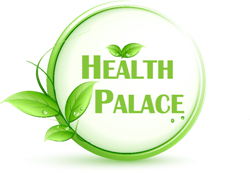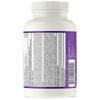Description
AOR Antioxidant Synergy 120 Veg Capsules:
Premium All-In-One Antioxidant Formula. Select ingredients synergistically reactivate one another for longer protection. Based on the body's antioxidant recycling system.
Antioxidants are nutrients found in all types of fruits and vegetables, plants, nuts and seeds. They help to protect the body from the damage caused by free radicals or oxidants - the toxic molecules that play a role in the development of diseases from cataracts to heart disease, from arthritis to abnormal cell development.
Antioxidants neutralize free radicals before they can damage cells. They do this by stabilizing the free radical, but in the process, they themselves become unstable mild free radicals and must be “recycled” back to their original form. This is why it is so important that antioxidant supplements contain effective antioxidants, not just those popularized in the media, so that they can recycle one another when needed.
This is a natural and quite important part of the oxidation-reduction signaling process. when some antioxidants are consumed in excess, they can actually cause more damage than good! Radicalized antioxidant requires other antioxidants to quench this process. But some antioxidants are more effective in certain locations in the body than others, meaning that you need to take the right antioxidants to halt this vicious cycle of antioxidants turning pro-oxidant! This is only prevented by One & Only Antioxidant Network through a the unique synergistic interactions of an elite antioxidant strike force: the Networking Antioxidants. When taken together, these specific, biologically essential nutrients form a dynamic team of synergistic co-antioxidants. Networking antioxidants can recycle one another from their radicalized forms back into their active, antioxidant forms. By this process of mutual regeneration, networking antioxidants enhance and extend one another's capacities, working within and around the mitochondria where most of the oxidation occurs. There are exactly five networking antioxidants: R (+)-lipoic acid, the vitamin E complex (including the four tocopherols and four tocotrienols), vitamin C, coenzyme Q10, and glutathione (GSH).
The networking antioxidants have a genuine synergy with one another. The effects of each networking antioxidant support greater functionality of the antioxidant network as a whole. No other antioxidants participate in the interlocking cycles of the antioxidant network. In fact, the ability of other antioxidants to play a protective role in the body depends on having a functional antioxidant network - but not vice-versa.
The Antioxidant Synergy formula is based on the interactions between specific antioxidants in the body known as the “networking antioxidants”. This “antioxidant network” includes R-lipoic acid, vitamin E, vitamin C, coenzyme Q10 and N-acetyl-cysteine, with added support from selenium, resveratrol and rosemary extract. The networking antioxidants have a cumulative effect when working together. In fact, the ability of other antioxidants to play a protective role in the body depends on first having a functional antioxidant network. Networking antioxidants "recycle" one another from their "radicalized" forms back into their active, antioxidant forms. By this process of mutual regeneration, networking antioxidants enhance and extend one another's capacities to have a better preventative effect on chronic diseases and aging.
AOR’s Antioxidant Synergy offers the most powerful combination of antioxidants to reduce inflammation and cellular damage that contributed to aging, infertility, heart disease and many other chronic health conditions.
How Does the Antioxidant Network Work? First, the original free radical is neutralized by a networking antioxidant. Unfortunately, the result is that the networking antioxidant is degraded into its free radical form. That antioxidant is rejuvenated by another co-antioxidant from the network team. A game of electron donating "hot potato" ensues, which ultimately results in rejuvenation of the last networking antioxidant free radical by dihydrolipoic acid (DHLA, the charged form of R-lipoic acid). And at this point, the "hot potato" game is halted when R-lipoic acid is cycled through the mitochondrial energy-production process.
Network Supporters A few antioxidants do play a supporting role to networking antioxidants, without fully participating in the antioxidant network recycling system. The best understood of these network-boosters are bioflavonoids and the mineral selenium. Among bioflavonoids, carnosic acid - which is found in the herb rosemary - is especially interesting because of its ability to repeatedly rearrange itself into a "cascade" of new antioxidant "booster" forms before being exhausted. Selenium supports the network by maintaining the body's supply of two key enzymes: glutathione peroxidase (GSH-Px) and thioredoxin reductase (TrxR). Only very low doses of selenium are needed to maximize the levels and activity of these enzymes. Resveratrol, found in grapes and wine, is a gene-activator in the mitochondria that helps reduce free-radical production in the first place.
Ingredients:
| Each 4 capsules Contains: | |
| R(+)-lipoic acid (sodium salt)* | 200 mg |
| Vitamin E Complex | 400 mg |
| Mixed Tocopherols (soy, min. 65% gamma) | 350 mg? |
| Vitamin E (from alpha-tocopherol) | 61 mg ATE/41 IU |
| Mixed Tocotrienols (palm) | 50 mg? |
| Vitamin C(magnesium ascorbate, ascorbyl palmitate) | 420 mg |
| Coenzyme Q10 | 30 mg |
| N-acetyl-cysteine (NAC) | 50 mg |
| Selenium (selenomethionine) | 50 mcg |
| Trans-Resveratrol | 5 mg |
| *Contains 20 mg sodium per serving?Tocopherols: 4 mg beta, >204 mg gamma, >44 mg delta.Tocotrienols: >14 mg alpha, 2 mg beta, >25 mg gamma, 7 mg delta. | |
Non-medicinal ingredients: Rosemary extract (5 mg), silicon dioxide, gum acacia, S.O.D.
Purity: no ingredients not listed on the label have been added to the product. Contains no wheat, gluten, corn, nuts, dairy, soy, eggs, fish or shellfish.
Suggested Dose :Adults take 1 capsule four times daily with food, or as directed by a qualified health practitioner. Do not use if you are pregnant or breastfeeding. Consult a health care practitioner prior to use if you have diabetes, cystinuria, heart disease or cancer, or if you are taking blood pressure medication, blood thinners, vasodilators (dilate the vascular system to treat heart conditions) or antibiotics. Consult a health care practitioner for use beyond 6 weeks.
Cautions : Do not use if you are pregnant or breastfeeding. Consult a health care practitioner prior to use if you have diabetes, cystinuria, heart disease or cancer, or if you are taking blood pressure medication, blood thinners, vasodilators (dilate the vascular system to treat heart conditions) or antibiotics. Consult a health care practitioner for use beyond 6 weeks.
Source: Tocopherols: soy. Tocotrienols: palm.
Main Applications: Antioxidant. Anti-aging.
References:
Biewenga GP, Haenen GR, Bast A. "The pharmacology of the antioxidant lipoic acid." Gen Pharmacol. 1997 Sep; 29(3): 315-31.Nordberg J, Arner ES. "Reactive oxygen species, antioxidants, and the mammalian thioredoxin system." Free Radic Biol Med. 2001 Dec 1; 31(11): 1287-312.
Packer L, Kraemer K, Rimbach G. "Molecular aspects of lipoic acid in the prevention of diabetes complications." Nutrition. 2001 Oct; 17(10): 888-95.Packer L, Weber SU, Rimbach G. "Molecular aspects of alpha-tocotrienol antioxidant action and cell signalling." J Nutr. 2001 Feb; 131(2): 369S-73S.
Sen CK, Packer L. "Thiol homeostasis and supplements in physical exercise." Am J Clin Nutr. 2000 Aug; 72(2 Suppl): 653S-69S.Upston JM, Terentis AC, Stocker R. "Tocopherol-mediated peroxidation of lipoproteins: implications for vitamin E as a potential antiatherogenic supplement." FASEB J. 1999 Jun; 13(9): 977-94.


















